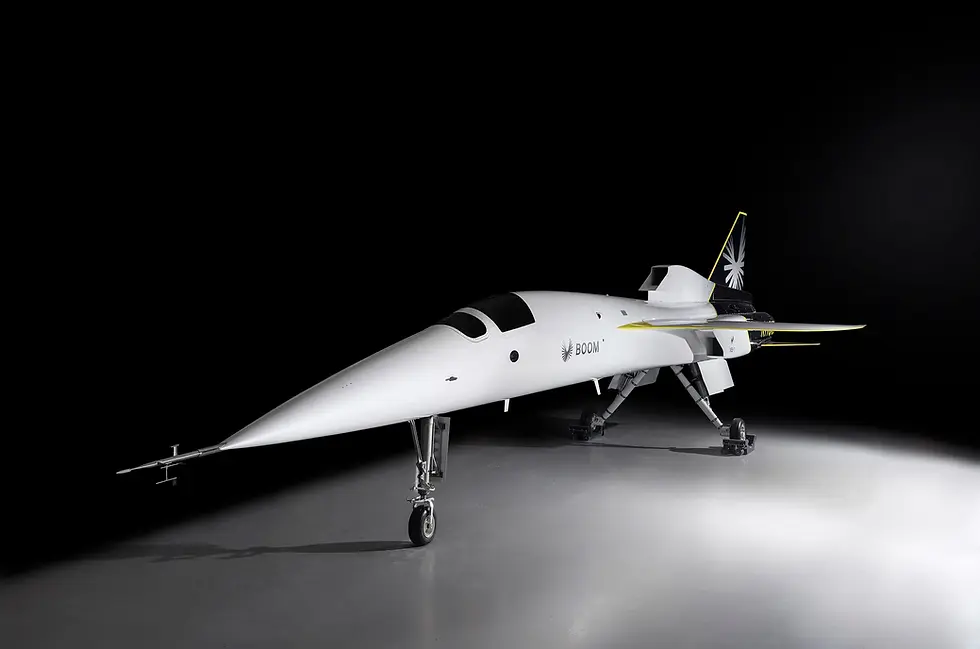Revolutionizing Air Travel: The Resurgence of Supersonic Jets
- Editor1
- Nov 28, 2023
- 2 min read

When Concorde bid farewell in 2003, the dream of swift transatlantic flights seemed to vanish with it. However, recent developments suggest a comeback for supersonic travel, spearheaded by companies like Boom Supersonic, Spike Aerospace, Exosonic, and Hermeus.
In a bold move, American Airlines pre-ordered 20 Overture jets from Boom Supersonic in 2022, reigniting the conversation around supersonic aviation. This marks a significant shift, with other major airlines like United Airlines and Japan Airlines also joining the supersonic race.
Boom Supersonic promises game-changing capabilities with its Overture jets, aiming to carry 80 passengers across more than 600 routes. The potential to reduce journey times by half compared to subsonic equivalents has caught the attention of both private companies and NASA, the latter working on the X-59 to make supersonic travel quieter.

The Supersonic Promise: Fast, Sustainable, Affordable
Proponents envision a future where supersonic flights revolutionize travel. Boom Supersonic claims its Overture jets will run on 100 percent sustainable aviation fuel (SAF), addressing environmental concerns. Spike Aerospace is pushing for net-zero carbon by 2040, emphasizing the sustainability angle.
Noise reduction is a key focus, with companies like Boom incorporating noise-reducing features to ensure a quieter take-off. The sustainability and affordability promises by these companies aim to avoid the pitfalls that led to the demise of Concorde.
Challenges on the Horizon: Economic and Environmental Hurdles
However, skeptics argue that supersonic travel comes with economic and political challenges. The exponential increase in fuel consumption at higher speeds raises concerns about operational costs, hindering mass production. Past failures, including the collapse of Aerion Supersonic, underscore the difficulties in establishing a viable market for supersonic aircraft.
The engine dilemma adds another layer of complexity. The withdrawal of Rolls-Royce from its partnership with Boom raises questions about the feasibility of developing suitable engines. The sustainability claims also face scrutiny, especially with the limited availability of SAF and the potential backlash from environmentally conscious consumers.

Looking to the Future: Niche Market or Mainstream Revolution?
While challenges persist, the supersonic dream remains alive. NASA's X-59 project and the ongoing efforts by aviation startups hint at a potential resurgence. However, it's crucial to manage expectations. The demand for supersonic travel appears niche, catering more to ultra-high-net-worth individuals and business aviation than mainstream commercial flights.
As we navigate the hurdles of economics, noise regulations, and environmental concerns, the question remains: Will supersonic jets redefine air travel, or are they destined for a niche existence?


